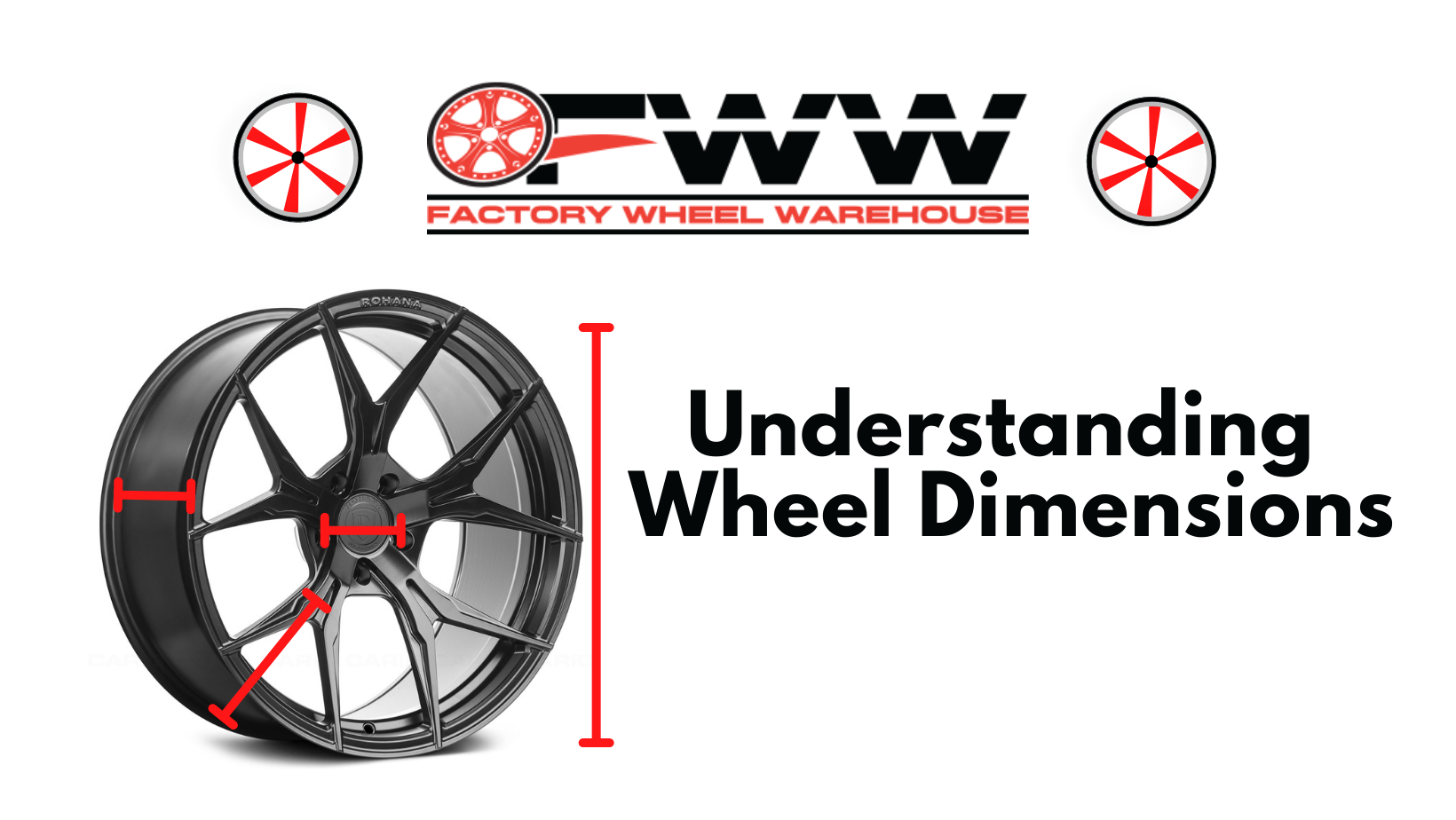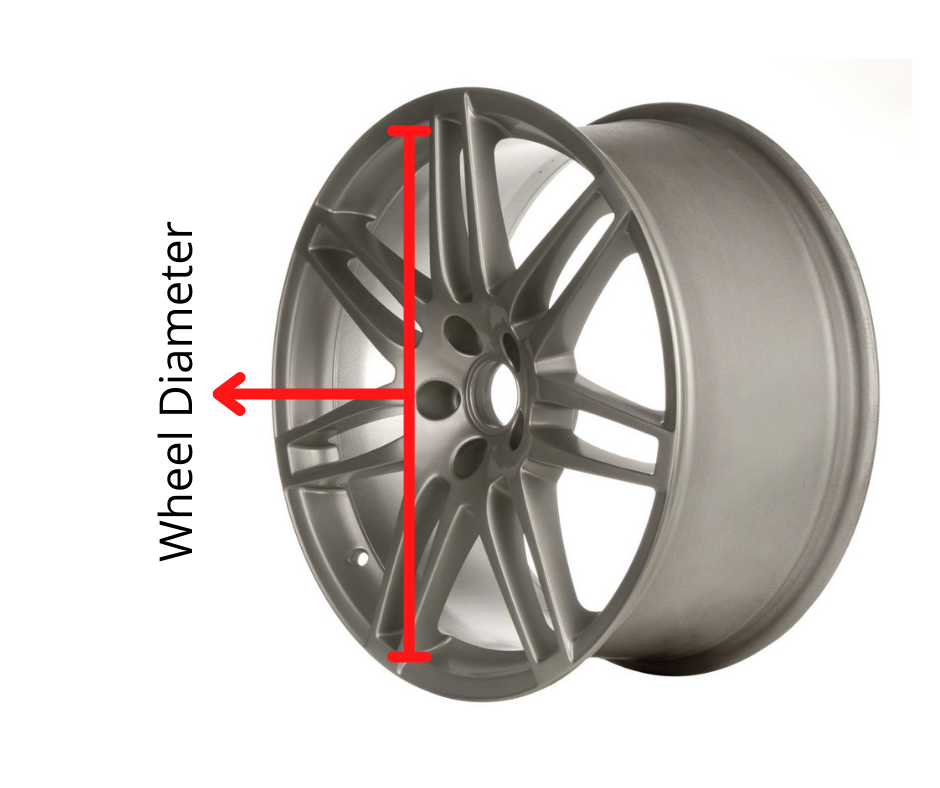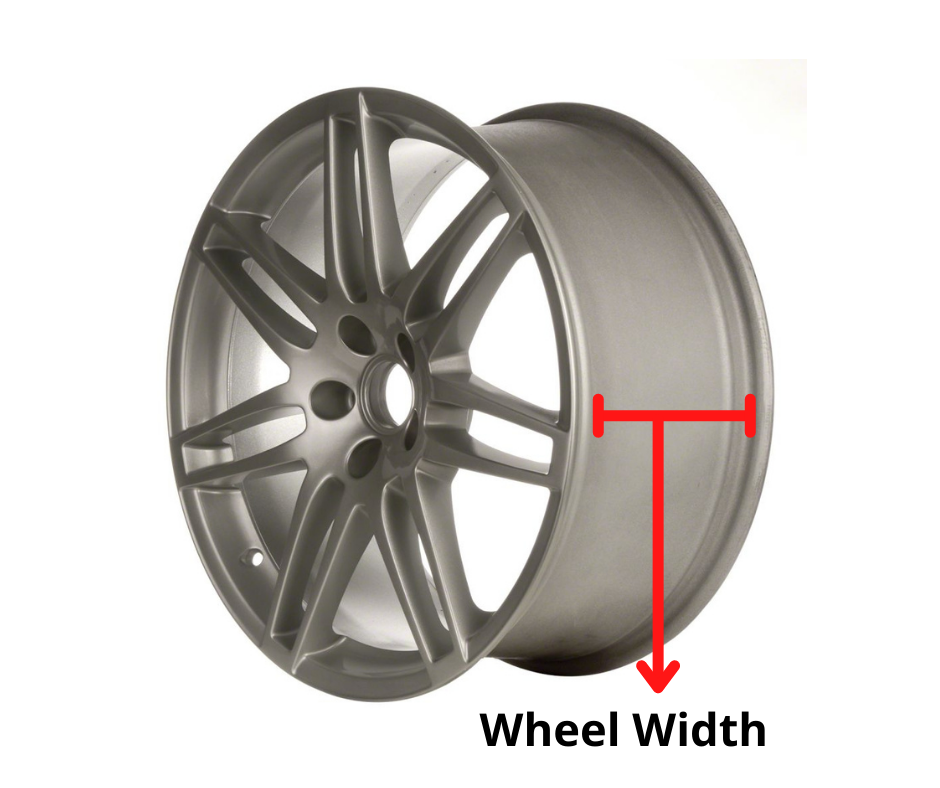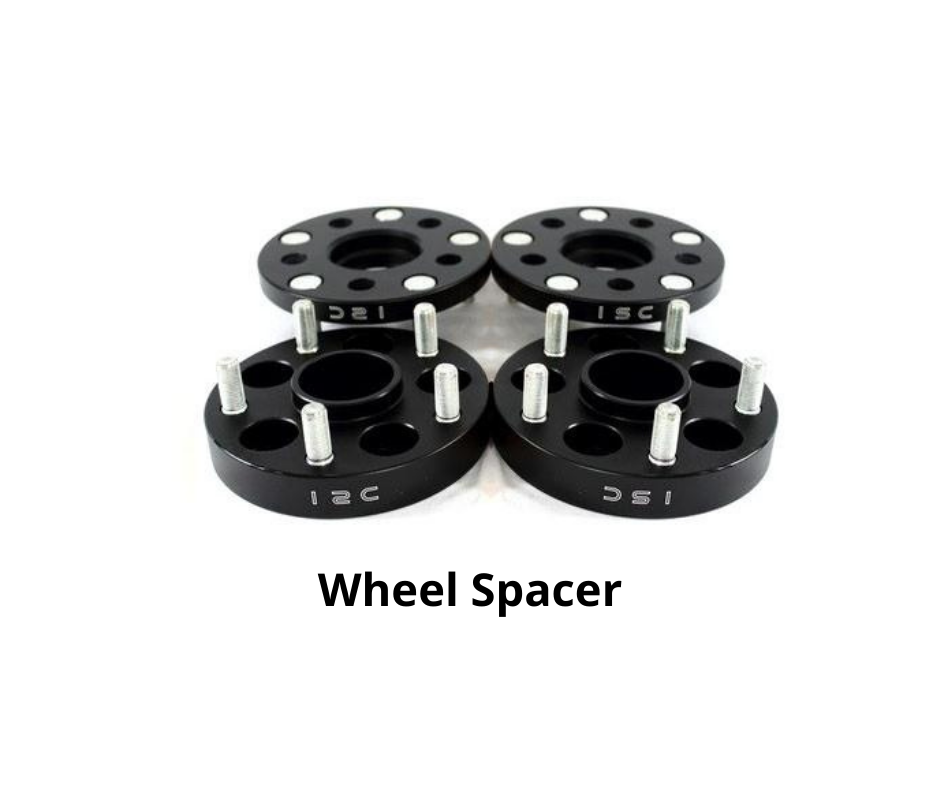Understanding Wheel Dimensions

Understanding Wheel Dimensions
What is Wheel Diameter and how to determine Wheel Diameter?
Wheel diameter is a common term used while buying car rims. You might have heard of 18-inch rims it basically means that the diameter of the wheel is 18 inches. The term diameter in wheels is used for the vertical distance between the lips across the center of car rims excluding the wheel lip measurement. More the wheel diameter lesser the rubber inflation on top. It also means more surface area of the car wheels and probably more aggressive the look.
Diving deeper the 19-inch rims and 20-inch rims are used for performance models as it provides extra grip on the road due to wider surface area of tires. The 17-inch rims and 18-inch rims are considered standard car wheels in the current times. In the past 14-inch rims and 15-inch rims were pretty standard but as time passed people started preferring larger diameter wheels due to aesthetics.

What is a Wheel Width and how to measure Wheel Width?
Wheel width is the horizontal distance from one end of the rim to the other end excluding the lip distance from both sides. Increasing wheel width increases the tire width. After buying your new or remanufactured rims make sure to make the tire width accordingly otherwise you will have difficulty fitting the tires onto your car rims. A larger tire mounted on a smaller rim might fit but a smaller tire mounted on a larger rim will not fit.

What are the Wide Wheel pros and cons?
A wide wheel is helpful as more rubber allows more faces of the tire to interact with the car rims. Thus, allowing more friction and grip to balance the car. This reminds us of formula one model cars which have a very wide base for their wheels. This gives the tires considerable balance and g-forces at turns. It also helps the car to stop with lesser braking distances increasing the performance considerably in wet and snow tracks for car tires.
On the other hand, a wide wheel means more weight, more rolling resistances which lead to more fuel consumption. A wide wheel is also more prone to damaging the rims if it hit a hard surface or a rock. Wider rims may not fit your wheels and thus you may consider buying new tires too making it an additional cost.
What are Staggered Fitment Wheels?
Staggered fitment wheels are the wheels that are wider wheels in the back of our car compared to the front ones in a vehicle. This arrangement is generally used in back-wheel drive cars. The back wheels provide extra traction and power on the road. They also enhance the road grip improving the stability of the vehicle and not letting the rear wheels break off. RWD and AWD vehicles use this arrangement for more power and heavy performance.
Wheel Offset explained:
Wheel Offset is the distance between the wheel's hub mounting surface (where the wheel bolts to the vehicle) and the wheel's true centerline. On a wheel with zero offsets, the hub mounting surface is at the wheel centerline.
The distance between the hub mounting surface (the place where the bolts are attached) towards the wheel's face defines the wheel offset.
If the distance between the hub mounting surface and the face of the wheel is less than the wheel offset is said to be a positive offset. It also means that the wheel is more on the inside than the fender.
If the distance between the hub mounting surface and the face of the wheel is more than the wheel offset is said to be a negative offset. It also means that the car wheels are more on the outside from the fender.

How does changing Wheel Offset affect a vehicle?
If one is to put on aftermarket wheels with negative offset, then the overall wheel will tend to be further outside than the normal wheel. This can cause clearance issues between the car wheels and the fender.
Similarly, a new wheel having a positive offset will be situated more on the inside when seen from the fender. This causes potential contact of the wheel with the brake or the suspension. The wider custom wheels can easily increase the negative offset, knowing the right offset is important for your wheels so that they may not hit the fender break or suspension.
What is Rim Backspacing?
Backspacing is the distance between the hub mounting surface and the inner edge of the wheel rim. The rim offset and backspacing must be correct on replacement wheels to ensure the wheel and tire assembly fits properly.

What is a Center Bore on wheels?
A hole in the center of the wheel that is machine cut to fit the flange that reaches the wheel hub is called the wheel center bore. The flange centers the wheel and bolts are tightened to load the wheel properly along with avoiding vibration. The size of the flanks varies according to the manufacturer.

What are Centering Rings for wheels?
The holes are cut in a rim to make the center as wide as possible so that the rim may fit different vehicles by using centric rings to create a perfect vehicle-specific fit. The use of centering rings to place the wheel on the flank has become an ordinary practice in the aftermarket industry.
The centering ring fills any empty space between the wheel hub and the center bore of the rim. It centers the wheel on the wheel hub so that no wobbling or vibrations occur while driving. The proper sizing of the centering ring is very important for wheel balancing and alignment.
Hub Centric vs Lug Centric Wheel:
The wheel that is not aligned on the basis of a hub and rests on the tightening of lug nuts is known as a lug-centric rim. The lug-centric rim will always have spacing and will not fit the hub of the car wheels. Meanwhile, the hub-centric wheel will perfectly fit on the hub of the car wheel leaving no space behind.
Bolt Pattern:
Your wheel requires a specific bolt pattern in order for it to fit. This is known by the number of holes a wheel has and how they are spaced apart. Most wheels require a 4, 5, 6, or 8 wheel lug bolt pattern. The number of holes is important but the spacing between the holes is also crucial and is equally important. These bolt patterns are measured using a 2 number system. The first number tells us how many bolt holes are present in the wheels. The second is the diameter of an imaginary circle that crosses each bolt hole center.
Dual drilled diameter bolt patterns also exist that have two circles instead of one while measuring the bolt pattern. Such car wheels are known by the 3 number representation. The first being the number of holes, the second being the diameter of the outer wheel and the third circle being the diameter of the inner circle.

Wheel Spacers And Adapters
The main point of usage of wheel spacers and adaptors is when using new rims for old cars. This requires certain fitment that can only be provided by using additional wheel spacers. If your newly bought wheels are having rubbing issues with the brakes or the suspension a spacer is the way to go. The spacer is an extra clearance that is required to fit the wheel so that it may not interfere with the other parts. Depending upon the spacer size the wheel stud is decided according.

Wheel adaptors have one bolt pattern drilled into them that allows installations onto the vehicle's original wheel studs. A new set of wheel studs at the same or different bolt patterns as the original to allow your new wheel to build up. Technically if both of these bolt patterns are the same then all you have is a really thick wheel spacer.

The wheel adaptors are for the person generally trying to adapt the wheel for a car that may or may not have the bolt pattern or the offset. Wheel adaptors allow you to change the bolt patterns of your vehicles as you might be able to change it from a 4 bolt pattern to a 5 bolt pattern or even a 6 bolt pattern.
What are the disadvantages of Wheel Spacers and Wheel Adapters?
By intending to keep your wheels outside the wheel well the suspension can be damaged for your wheels. The car wheels are designed to divide the carload equally. By using the back spacers the load balancing becomes uneven. This also causes steering difficulties and the steering gets really hard while driving.
Conclusion:
Wheel measurements and wheel dimensions are considered a difficult topic to understand but we have tried our best to make you understand all the technical names that you found difficult. The wheel diameters, wheel widths, wheel offsets, wheel center bore, hub centric wheels, lug centric wheels wheel spacers, and wheel adaptors all possible terms have been explained. For more details and information regarding buying the best OEM wheels please visit Factory Wheel Warehouse. Also, Elite of Albany is the best repair shop in town and is always available to serve you.
For professional customer services about rims and wheels call us at +1 518-579-9260.
Related Articles: How to measure the tire tread of your car wheels?









